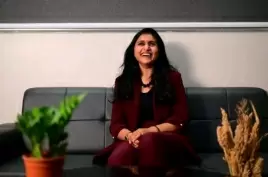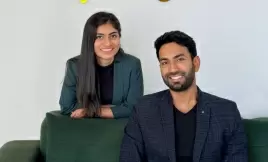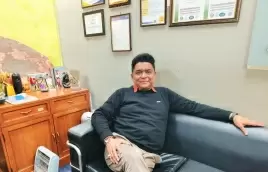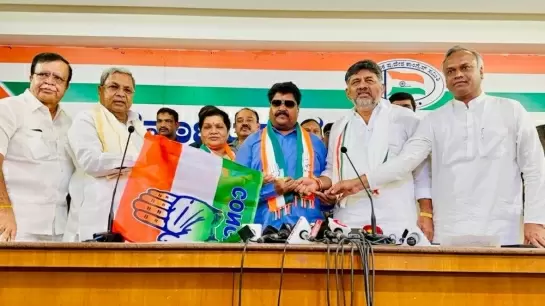“The idea was to make programmes on issues affecting local people”

07-June-2014
Vol 5 | Issue 23
Ajanta Borah’s eyes light up with pride each time she narrates the incident.
The voice behind Hello Brahmaputra, a popular programme on the community radio station, Radio Brahmaputra, Borah was visiting the Khanikar tea estate – a tea plantation in Assam’s Dibrugarh district – when a visually challenged youth instantly recognised her voice.
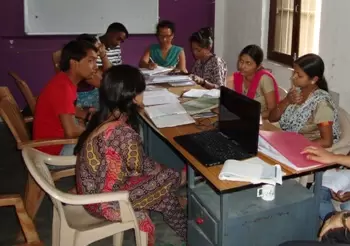 |
|
Radio Brahmaputra's community reporters sit together to chalk out the programming content (Photo: Azera RahmanWFS)
|
“He called out to me by my name, and said how much he liked my programme. This really moved me,” says Borah. She adds, “I had always believed that our work was having an impact, but when I heard his words, I understood the extent of that impact.”
Their work is about identifying issues close to the hearts of the marginalised communities living in the tea estates, river islands, and villages in Assam’s Dibrugarh district, packaging them into infotainment bullets of 30-minute each, and delivering them to the people in the local languages of not just Assamese and Bhojpuri, but Shadri – spoken by those working on the tea estates - as well as the tribal dialects of the Misings and Bodos.
Over the last five years, Radio Brahmaputra has been creating waves of awareness and entertainment to a listener base of 2.5 lakh people in the often forgotten pockets of Assam.
Set up in 2009 by the Centre for North East Studies and Policy Research, with support from Unicef, the radio station had modest beginnings.
It started with just one person, Bhaskar Jyoti Bhuyan, before growing into a team that now mostly constitutes reporters from the communities themselves. After operating mainly through narrow casting, the station got clearance from the Ministry of Communications and Information Technology, Government of India, in March 2014 to broadcast on the frequency 90.4 MHz.
Reveals Bhaskar, “When we started out we didn’t even have office space. No one – neither the government nor the tea garden management – was willing to give us space.
“We finally managed to get on rent a 100-year-old house on a river embankment. Our initial target was the population living on the saporis (river islands). There are 14 of them in this district.”
The target population later expanded to include other marginalised communities, those working in the tea gardens or living in the neighbouring villages, all within a 15 kilometre radius.
“The idea was to make programmes on issues affecting the local people in their own languages. In order to do this we identified 80 volunteers from these communities and, along with them, went to stay in the saporis and tea gardens for five to six days to understand the relevant issues,” Bhaskar continues.
What emerged from initial discussions in the tea gardens was the terrible impact of tuberculosis, which had led to high levels of indebtedness. Other issues covered included livelihood concerns like agriculture and fishing.
After the discussions, 15 volunteers who had studied up to at least Class 10 were selected to take on the role of reporters. “Devising a good training programme for them was tough because it had to start with the basics of hygiene and personal grooming.
“We then moved on to lessons in the use of the computer and finally to the advanced stage of handling equipment and acquiring the knack of writing radio plays,” explains Bhaskar.
Initially, all the programmes were narrow-casted. This meant that they were first recorded and then aired before the community. Listeners were then asked to vote on their quality.
“The issues covered were mostly decided by the community itself in village meetings. Health was a major focus area, and we did a lot of programmes on tuberculosis, especially for the tea garden community, as well as on diarrhoea, malaria, maternal and child health,” Bhaskar recalls.
Maternal and child health, the importance of breastfeeding a child in the first six months, immunisation and the need for a healthy diet, found space in these radio programmes as well.
Radio plays quickly proved to be winners because the characters were played by community members themselves and therefore had a degree of authenticity. For instance, Pritma Handique, 55, a housewife, became such a hit with her character of Jamini aita (grandmother) in a radio play made for World Iodine Deficiency Disorder Day that she is now referred to by her character’s name.
Relates Rumi Naik, a community reporter, “After recording the radio plays the participants are thrilled to hear themselves and often joke about how different they sound on air. A lot of hidden talent emerges.”
But it is not just health and social issues that the station cover. Preserving local cultural expression, like folk songs that would have got lost over time, has become a crucial part of Radio Brahmaputra’s programmes.
The festival of Bihu always sees a number of music programmes by local artistes. “We get a lot of volunteers who want to sing traditional songs and we plan such programmes,” says Sandhya Sharma, who records in Bhojpuri.
Since the attempt is to encourage audience participation, phone-ins have been introduced which induce listeners to call in between shows. There are phone-outs where anchors invite listeners to come up with their views.
The challenges facing Radio Brahmaputra are considerable. For the reporters, getting from place to place takes a lot of effort. For instance, within the soporis, they often have to walk as much as 15 kilometres to reach a particular community.
Managing the finances of an institution of this kind is another problem. Fortunately, the reporters don’t complain about their minuscule pay and, on the contrary, take pride in their work.
(Azera Parveen Rahman was awarded the National Media fellowship supported by the National Foundation of India (NFI). This feature was generated under the fellowship.) - Women's Feature Service



